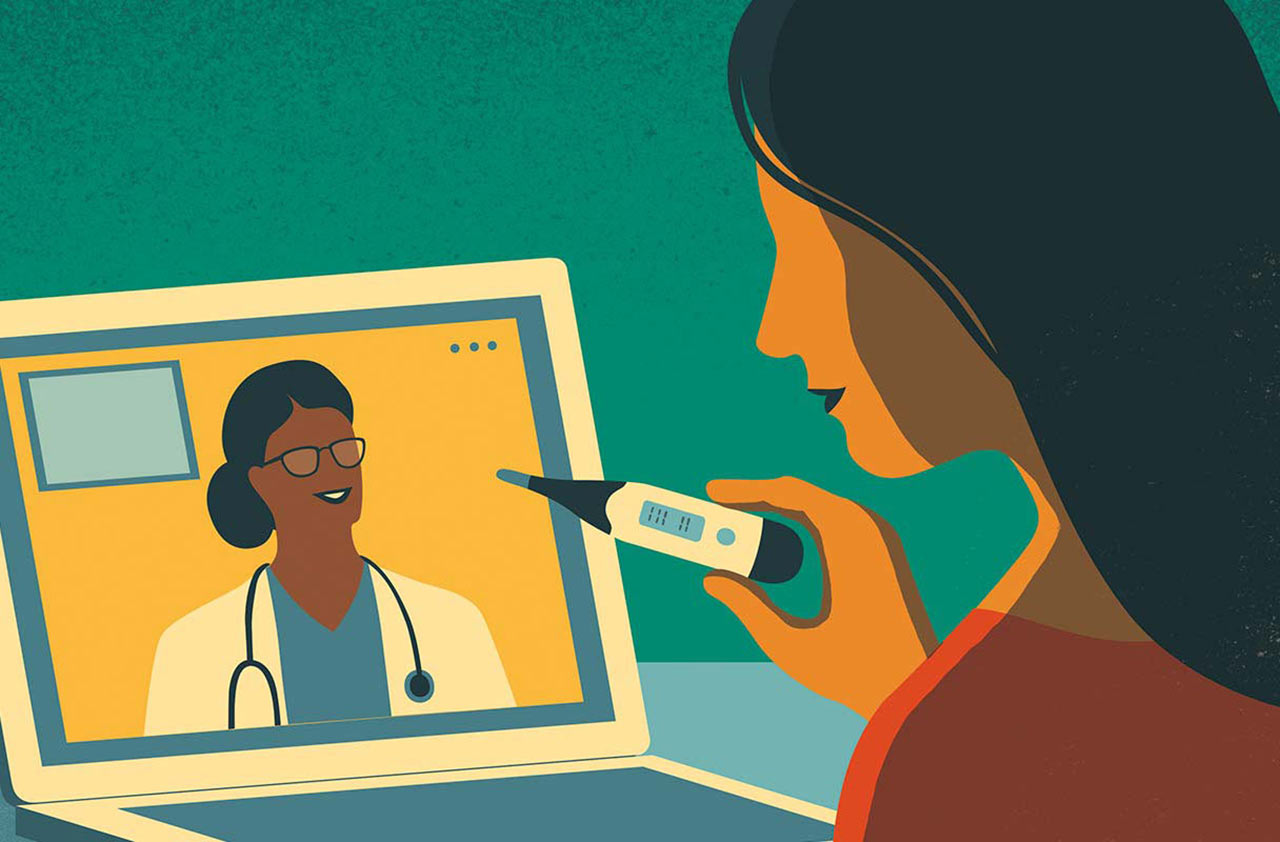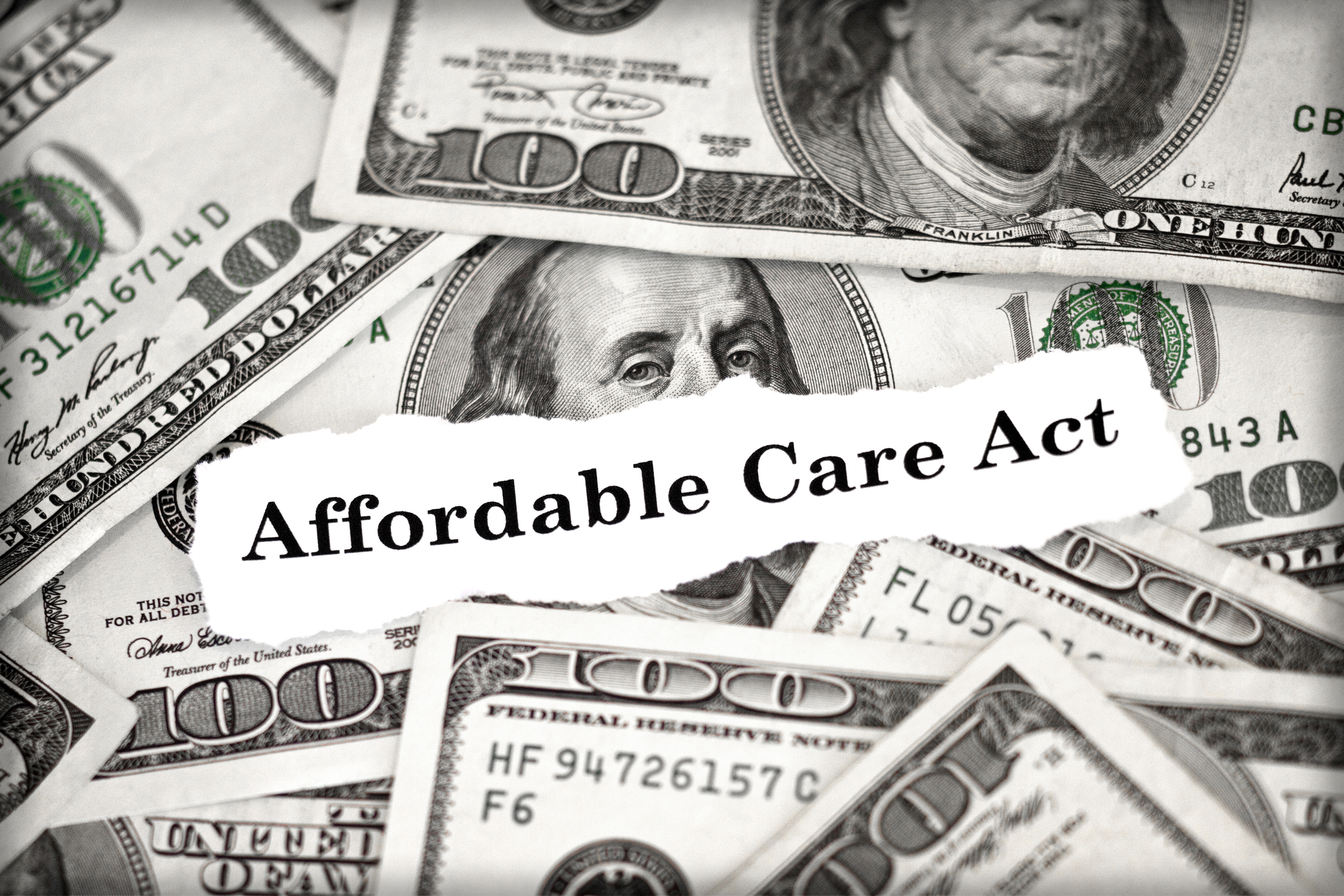Finding Affordable Health Care Now
The pandemic has caused millions of people to lose their jobs — and their health coverage. Here’s a guide to finding affordable insurance.

As the effects of the coronavirus pandemic took hold this spring, more than 38 million Americans lost their jobs, and an estimated 27 million workers and their families found themselves without health insurance, too. Nearly half of Americans got their coverage through an employer-sponsored plan in 2018, according to the Kaiser Family Foundation.
But as the coronavirus continues to affect communities across the U.S., it’s more important than ever to have health insurance. And if your income has taken a blow, you may have greater access to affordable coverage than you did while you were working. Kaiser estimates that 79% of those losing employer coverage are likely eligible for subsidized coverage through Medicaid or the Affordable Care Act marketplace.
As you compare your options, consider factors including the premium, deductible, co-payments, out-of-pocket maximum and level of prescription-drug coverage. You may also have choices among plan types. High-deductible plans typically have relatively low premiums, but in 2020 the deductible starts at $1,400 for an individual and $2,800 for a family. With a high-deductible plan, you may also have access to a health savings account, which allows you to set aside pretax money for deductibles and other out-of-pocket medical costs. A preferred provider organization (PPO) plan may be a good choice if you require regular visits with a health-care provider for a medical condition. Compared with a health maintenance organization (HMO), which typically provides little to no coverage for out-of-network visits, a PPO may have a higher premium but offer greater coverage for out-of-network care. Because of their higher cost to insurers, however, PPOs are hard to come by in the individual marketplace.

Sign up for Kiplinger’s Free E-Newsletters
Profit and prosper with the best of expert advice on investing, taxes, retirement, personal finance and more - straight to your e-mail.
Profit and prosper with the best of expert advice - straight to your e-mail.
One way to ease the pain of switching plans is to ask your medical providers what insurance plans they accept, says Adam Hyers, an insurance broker in Columbus, Ohio. You may be able to find a policy that allows you to continue to see many of your doctors without going out of network.
Keep in mind that if you’re 65 or older and have delayed Medicare coverage because you have employer-based insurance, you are eligible for a special enrollment period for Medicare when you leave your job.
If you are working, you may be able to make changes to your employer-sponsored plan outside of open enrollment. The IRS is temporarily permitting employees to join or drop an employer plan or make certain changes to their existing coverage, including adding family members or choosing a different type of plan. Employees may also open a flexible spending account or alter their contribution amount midyear and get more time to claim unused funds. However, employers are not required to provide these options to workers.
Comprehensive insurance plans are required to fully cover the cost of coronavirus testing. (If you’re not insured, you should be able to get tested free at certain locations, but you’ll likely need an order from a doctor.) Plus, many insurers are offering breaks for treatment of COVID-19 or for those facing hardships because of the crisis. Nearly 60% of insurers said they were waiving at least some out-of-pocket charges for treatment, and 60% said they were offering programs to defer premiums for people affected by the coronavirus crisis, according to a survey conducted in late March and early April by eHealth, an online insurance marketplace.
Consider COBRA
If you work for a company that has at least 20 employees and you lose health insurance because it reduces your hours or terminates your job for a reason other than gross misconduct, it must offer continuation health care coverage for you, your spouse and your dependent children under COBRA. The law generally lets you extend coverage that you already had through your employer’s group plan for up to 18 months. Some states require small employers to provide continuation coverage (known as “mini-COBRA”), too, but term lengths and events that qualify you for it vary.
If coverage under COBRA is available to you, your former employer should provide information about enrolling. When you elect COBRA, you continue the same type of policy you had. But when your employer’s annual open-enrollment period begins, you may switch to a new type of plan — say, one with a lower premium and higher deductible.
While COBRA is convenient, it’s costly. You typically pay both the employee and employer share of the premium, plus a 2% administrative surcharge. Total average annual premiums (including employer and employee contributions) for employer-sponsored health plans surpassed $20,000 for family coverage and $7,000 for individual coverage last year, according to a survey by the Kaiser Family Foundation. For a possible new round of coronavirus-related stimulus funding, Democratic lawmakers have proposed COBRA subsidies to cover the full cost of premiums for furloughed and laid-off workers, but a law had not been passed as of press time in mid May.
For those who can afford it, COBRA may make sense — especially if you need ongoing care for, say, a pregnancy or cancer treatments, says Karen Pollitz, senior fellow at the Kaiser Family Foundation. If you switch insurance plans, doctors or facilities that you’re already visiting may no longer be covered. “A lack of continuity can cause confusion, disruption and more out-of-pocket costs,” says Pollitz. Sticking with COBRA for a while may also be a good option if you’ve already met your plan deductible for the year.
Typically, your former employer has to give you 60 days from either the date you receive notice to elect COBRA or the date you would lose coverage (whichever is later) for you to enroll, and coverage is retroactive as long as you pay any back premiums that you owe. In response to the pandemic, however, the government is requiring employers to disregard the period between March 1 and 60 days after the end of the national emergency regarding the pandemic (or some other date federal agencies may announce in the future) to determine the enrollment window. Say you received notice to elect COBRA on May 1 and the national emergency ended May 30. (As of mid May, an end to the national emergency had not been declared.) Your employer would not start the clock on your COBRA election period until July 29, 2020 (60 days later), and then you’d have another 60 days — until September 27 — to enroll in COBRA.
Take some time to compare COBRA with your other options or to see whether you’re offered a new job with health insurance benefits. If you rack up any medical bills during that time, you can submit them for insurance coverage as long as you elect COBRA within the required window.
Get on a family member's plan
If you lose employer-sponsored coverage because of a job loss and your spouse works for a company that offers health insurance, you typically have 30 days to request special enrollment in your spouse’s plan. But as with COBRA, temporary rule changes require employers to disregard the period between March 1 and 60 days after the end of the national emergency regarding the pandemic (or another date federal agencies may announce in the future). Using the example cited above in the COBRA section, you would have 30 days after July 29 —w hich is August 28 — to enroll in your spouse’s plan.
Joining your spouse’s plan may be the most cost-effective option because your spouse’s employer is likely paying a portion of the premiums. And compared with policies available in the individual market, employer-sponsored plans usually come with wider physician networks and lower deductibles and out-of-pocket limits, says Rich Fuerstenberg, senior partner for employee benefits consultant Mercer. But consider other important factors, too: Are physicians that you’re already seeing in-network on your spouse’s plan, or will you have to pay more out of pocket to see them? How are your prescription drugs covered? Does your spouse’s employer offer a variety of plan types, or are you limited to, say, a high-deductible plan?
Under the rules of the Affordable Care Act, children younger than age 26 may join a plan that their parents use through an employer or the individual marketplace. (If the parents are on Medicare, however, the children can’t use the coverage.) Generally, children can stay on a parent’s plan until they turn 26 even if they get a job with an employer that offers health insurance, get married or have a child. After that, children may be eligible for COBRA under the parent’s policy for up to 36 months, but the coverage is likely to be pricey.

Explore the government marketplace
If you’ve lost job-based health insurance, you have a 60-day special enrollment period to purchase a policy in the individual market under the Affordable Care Act. You may also qualify for special enrollment if you lose coverage because you are no longer eligible for Medicaid or you’re unable to use a family member’s policy (because you turned 26, for example, or got divorced), among other events.
Notably, some states opened their health care exchanges to anyone for a limited time in response to the pandemic; most of those special open-enrollment periods have closed, but California’s lasts until June 30. At healthcare.gov/get-coverage, choose your state from the drop-down menu. If your state runs its own marketplace, you’ll be directed to it. Otherwise, you’ll search for a policy via HealthCare.gov.
If you get an ACA policy and your income is between 100% and 400% of the federal poverty level, you are eligible for a tax credit that lowers the plan premium. If your income is close to the poverty level, you may pay as little as $20 a month in premiums, says Pollitz. For 2020 plans, the upper income limit to qualify for a subsidy is $49,960 for an individual, $67,640 for a family of two or $103,000 for a family of four.
The tax credit is based on your estimated annual income for the year that you’re seeking coverage — not last year’s income —which may be helpful if you’re newly unemployed and your income has fallen. But you’ll have to do some guesswork about how much income you may receive for the rest of the year. You could, for example, start with any income you earned through your job and add unemployment benefits that you expect to receive the rest of the year, Pollitz says. (The extra $600 a week the federal government is adding to unemployment checks through July counts.) Income from traditional IRA and 401(k) withdrawals and interest and capital gains on investments also count.
If your circumstances change — say, your income increases because you get a new job or you add or lose a household member — go back to the marketplace and update your application. When you file your federal tax return for the year that you had the insurance policy, you’ll have to repay any extra amount you received in advance tax credits if you underestimated your income. If you overestimated income, you’ll get money back.
Policies are divided into four categories — bronze, silver, gold or platinum—based on the amount of the premium, out-of-pocket costs and deductible. Generally, bronze plans have the lowest premium and highest deductibles, platinum plans have the highest premiums and lowest deductibles, and silver or gold plans fall somewhere in between. All plans purchased through the exchange are compliant with the Affordable Care Act, so certain types of preventive care are free no matter what type of plan you buy. ACA plans must also provide some level of coverage for maternity care, hospitalization, emergency care and mental-health services, among other benefits. And ACA plans cannot deny you coverage or charge you more because you have a preexisting condition.
Going off the exchange
If you’re eligible for a tax credit, you must buy a plan through the exchange to claim it. Otherwise, you may want to take a look at your options outside the exchange, too. You can shop directly with insurance companies or work with a health insurance broker or agent—search for one in your area at localhelp.healthcare.gov or nahu.org. You can also use a service such as ehealthinsurance.com, through which you can compare policies online or talk with an agent through a phone call or web chat.
Plans that you buy off the exchange may or may not be ACA-compliant. Some insurers offer plans that follow ACA rules but with different features than those they offer on the exchange — for example, with different provider networks or cost-sharing breakdowns.
Although telehealth is gaining prominence as a result of the COVID-19 crisis, its heightened role may be here to stay.
Short-term plans, which may last as long as 12 months and be renewed for up to three years, do not meet ACA requirements. They often exclude or charge more for care related to preexisting conditions. In addition, they usually don’t cover maternal and mental-health care, among other services. In exchange for less-comprehensive coverage, short-term policies have low premiums. Using one of the lowest-priced plans, a family of three would pay an average premium of $116 per month, compared with $862 a month for a bronze plan from the exchange with no tax credit, according to eHealth. A 40-year-old woman would pay $60 a month, compared with $347 for an unsubsidized bronze plan.
If you’re healthy, a short-term policy may make sense for a few months in case of emergency. “I’m seeing more people go with short-term plans,” who often sign up in hopes that they will soon get a job and have access to employer-sponsored coverage, says Hyers, the Ohio insurance broker. For example, you could get a policy that lasts through the end of the year and cancel it if you find a job that offers insurance in the meantime. If you don’t get employer-sponsored coverage by the time open enrollment starts—the period to sign up for a plan for 2021 through HealthCare.gov is November 1 through December 15, 2020—you could then explore the ACA-compliant options.
See whether you qualify for Medicaid
The Medicaid public health insurance program provides free or low-cost comprehensive coverage for those with low incomes, so it may not come to mind as a possibility if you were a moderate or high earner before you lost your job. But Medicaid considers current monthly income rather than annual income, “so if you’re suddenly without income, you may very well qualify,” says Cheryl Fish-Parcham, director of access initiatives for Families USA, a nonpartisan consumer health care advocacy organization.
In 36 states and Washington, D.C., you can qualify for Medicaid based solely on your income (in other states, factors such as household size, family status and disability are also considered). In those states, you’re eligible if your income is less than 138% of the poverty level — in 2020, that breaks down to $1,467 a month for an individual, $1,983 for a family of two or $3,013 for a family of four. Those limits include standard unemployment compensation but not the extra $600 a week the government is adding to unemployment checks through July.
Even if you live in a state that has not expanded Medicaid to all low-income adults, your family may qualify for assistance based on other factors. Children in unemployed families will likely become newly eligible for Medicaid or the Children’s Health Insurance Program (CHIP), which is available to children whose family income is at or above 200% of the federal poverty level in almost all states, according to the Kaiser Family Foundation.
You can apply for Medicaid and CHIP anytime; you don’t have to wait for an open-enrollment window or qualify for a special-enrollment period. If you fill out an application through the marketplace at HealthCare.gov and it appears that someone in your household may qualify for Medicaid or CHIP, the site will send your information to your state’s Medicaid agency, which will contact you. But Medicaid offices are experiencing high demand, and going that route may take longer than applying directly with your state’s agency, says Fish-Parcham. At Healthcare.Gov, you can use a tool to judge whether you’re eligible for Medicaid based on income alone and get contact information for your state’s Medicaid agency.

Telemedicine takes off
As social distancing has become a fact of life in the era of COVID-19, the use of telehealth services — which allow you to communicate with health professionals virtually or through a phone call—is skyrocketing. Some 96% of health insurers are seeing increased demand for telemedicine services, according to an eHealth survey. One health plan in the Detroit area saw its telehealth claims jump from an average of about 1,000 per month to 18,000 in March and more than 20,000 before the end of April, says Connie Hwang, chief medical officer and director of clinical innovation for the Alliance of Community Health Plans.
Recent changes in response to the coronavirus crisis have expanded the availability and insurance coverage of telehealth services. To encourage patients to stay home, some insurers are waiving co-payments or requirements to meet a deductible for telehealth visits. For a plan year that starts on or before December 31, 2021, a high-deductible health plan paired with a health savings account may cover telehealth services before the policyholder reaches his or her deductible.
During the COVID-19 national emergency, clinicians nationwide may use a broader variety of video-chat tools — such as Apple’s FaceTime, Facebook Messenger, Skype or Zoom — to conduct virtual appointments without facing a penalty for violating privacy and security rules.
If you’re healthy, a short-term policy may make sense for a few months in case of emergency.
Medicare, meanwhile, will cover telehealth services for patients anywhere in the country, not just those in rural areas. And Medicare patients can receive coverage for a broader range of services through telehealth, use telehealth services as a new patient (previously, you had to have an established relationship with your doctor) and get coverage for audio-only consultations over the phone if they don’t have access to video services. Some independent telehealth services are offering free or discounted consultations. CareClix, for one, recently provided free screenings for those who think they have been exposed to COVID-19 and are experiencing a fever and other symptoms.
Traditionally, telemedicine has been used for somewhat urgent but nonemergency needs — say, to diagnose and prescribe treatment for a sore throat. But in recent years, telehealth has expanded to include such services as physical therapy and mental-health care. You may also be able to consult remotely with your physicians for management of chronic conditions, such as high blood pressure. To some degree, telehealth can help patients who may have COVID-19, too. Doctors may, for example, use a virtual service to evaluate a patient’s symptoms and refer him or her to a testing facility, says Mary Kay O’Neill, partner with employee-benefits consultant Mercer.
Although telehealth is gaining prominence as a result of this crisis, its heightened role may be here to stay. In the eHealth survey, 85% of insurers think that increased demand for telehealth services will continue in the future. And patients may decide that they prefer it. Some patients like virtual visits “because the doctor is actually looking at them,” rather than, say, turning away to type notes, says Hwang.
Get Kiplinger Today newsletter — free
Profit and prosper with the best of Kiplinger's advice on investing, taxes, retirement, personal finance and much more. Delivered daily. Enter your email in the box and click Sign Me Up.

Lisa has been the editor of Kiplinger Personal Finance since June 2023. Previously, she spent more than a decade reporting and writing for the magazine on a variety of topics, including credit, banking and retirement. She has shared her expertise as a guest on the Today Show, CNN, Fox, NPR, Cheddar and many other media outlets around the nation. Lisa graduated from Ball State University and received the school’s “Graduate of the Last Decade” award in 2014. A military spouse, she has moved around the U.S. and currently lives in the Philadelphia area with her husband and two sons.
-
 Customer Services are Strained at the SSA, You Should Plan Around These Federal Holidays
Customer Services are Strained at the SSA, You Should Plan Around These Federal HolidaysIf you have a question or need information from a federal agency, check the federal holiday schedule to make sure you get your business done before they close.
By Donna LeValley
-
 Stock Market Today: No 'Powell Put'? No Problem
Stock Market Today: No 'Powell Put'? No ProblemInvestors, traders and speculators look beyond both another Trump post and more signs of slowing economic activity.
By David Dittman
-
 End of Expanded Premium Tax Credit Would Drive Uninsured Rates Higher
End of Expanded Premium Tax Credit Would Drive Uninsured Rates HigherTax Credits Millions of people could become uninsured if Congress fails to extend the enhanced premium tax credit.
By Gabriella Cruz-Martínez
-
 Over 162,000 Dreamers Cut Off From Affordable Care Act Insurance
Over 162,000 Dreamers Cut Off From Affordable Care Act InsuranceHealth Insurance A federal court in North Dakota has blocked ACA coverage for DACA recipients in 19 states. Here's what it means.
By Gabriella Cruz-Martínez
-
 2025 Open Enrollment: Some DACA Recipients Can Purchase Affordable Care Act Health Insurance
2025 Open Enrollment: Some DACA Recipients Can Purchase Affordable Care Act Health InsuranceOpen Enrollment Your eligibility to purchase health insurance from the federal marketplace may have changed. Here's what you need to know.
By Gabriella Cruz-Martínez
-
 Roth IRA Contribution Limits for 2025
Roth IRA Contribution Limits for 2025Roth IRAs Roth IRA contribution limits have gone up. Here's what you need to know.
By Jackie Stewart
-
 Medicare, ACA Call Center Workers To Hold Another Protest: What To Know
Medicare, ACA Call Center Workers To Hold Another Protest: What To KnowMedicare and Obamacare call center employees plan another protest, this time in Washington, DC on December 12.
By Joey Solitro
-
 Four Tips for Renting Out Your Home on Airbnb
Four Tips for Renting Out Your Home on Airbnbreal estate Here's what you should know before listing your home on Airbnb.
By Miriam Cross
-
 Five Ways to a Cheap Last-Minute Vacation
Five Ways to a Cheap Last-Minute VacationTravel It is possible to pull off a cheap last-minute vacation. Here are some tips to make it happen.
By Vaishali Varu
-
 How to Figure Out How Much Life Insurance You Need
How to Figure Out How Much Life Insurance You Needinsurance Instead of relying on rules of thumb, you’re better off taking a systematic approach to figuring your life insurance needs.
By Kimberly Lankford